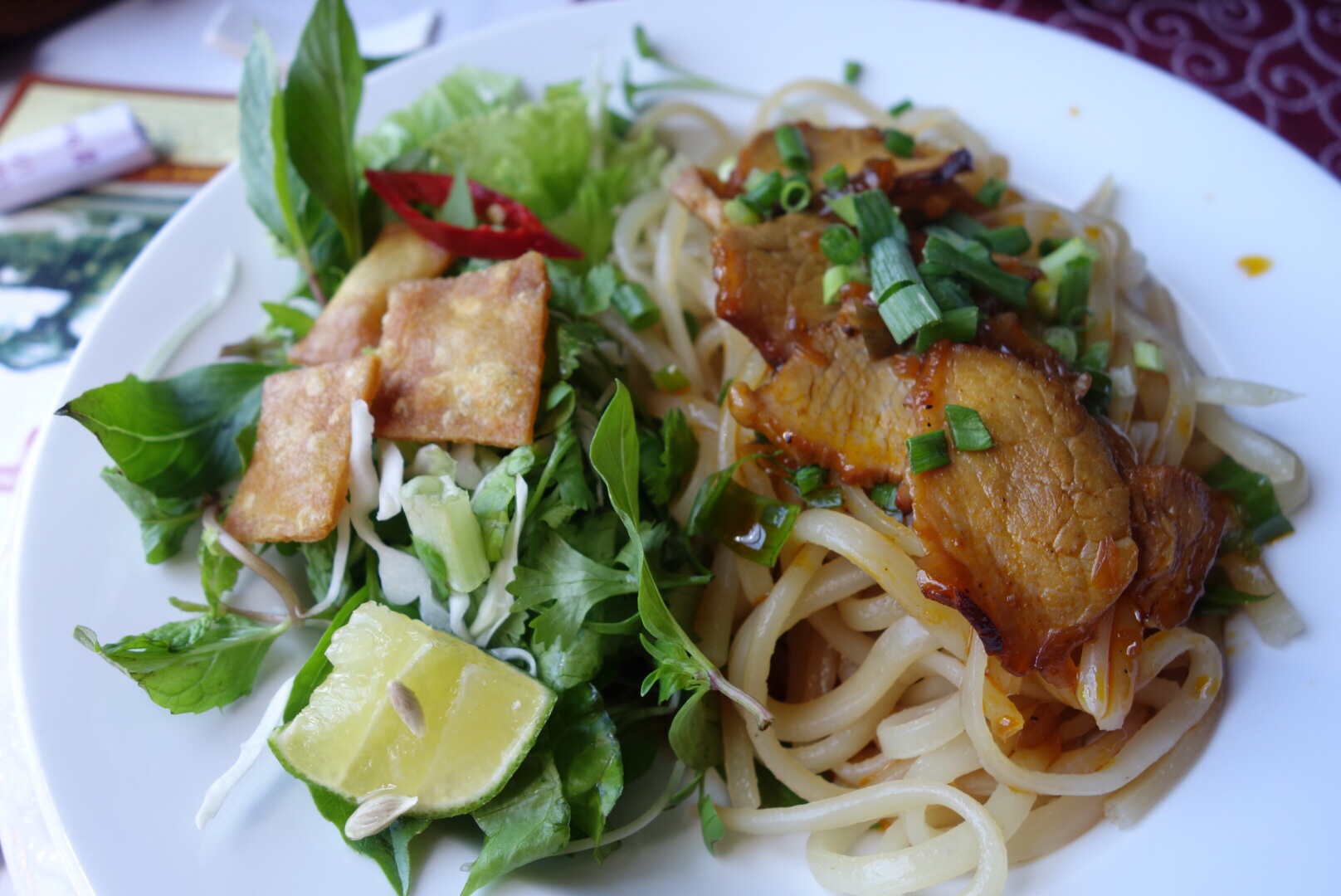
TRANGNHÀ VNY2K
 TRANGCHỦ TRANGCHỦ  Ghidanh
Ghidanh  Ðăngnhập
Ðăngnhập  Danhsách thànhviên
Danhsách thànhviên |
 Xem thưriêng
Xem thưriêng  Banquảntrị
Banquảntrị  Tìmkiếm
Tìmkiếm  Thắcmắc chung
Thắcmắc chung |

TRANGNHÀ VNY2K |
|
| Cao Lau, One Of Vietnam's Greatest Culinary Treasures | |||
| |||
| Tácgiả |
| ||||||||||||||||
|
Cao Lau, One Of Vietnam's Greatest Culinary Treasures
Alison Spiegel  Cao lau consists of thick rice noodles, pieces of barbecued pork, greens and crunchy croutons. The pork is sliced thin and cooked in the traditional Chinese method known as char siu. In addition to adding greens on top of the dish, it's also common to add bean sprouts, which together with the greens adds a burst of freshness and crisp texture to the chewy noodles and meaty pork.The final touch is the crunch of the croutons, which are made from dried cao lau noodles. The cao lau noodles are the star of the show and the ingredient that makes this dish unique to Hoi An. While the exact recipe is known only to a few people, the tale behind the noodles is legendary. First, cao lau noodles are said to be made using only water from one ancient well in Hoi An called Ba Le well. The well is surprisingly unmarked in a town that depends on tourism and would undoubtedly profit on making it a better-known stop on the tourist circuit. Tucked inconspicuously in an alley, however, wedged right up against a house, the well looks like nothing special and could be easily missed if you're not looking for it. This obscurity makes the well all the more mystical, adding to the esoteric quality of the noodles made with its water. In addition to the water for cao lau noodles supposedly coming from this one, special well, the water is also supposed to be mixed with a specific type of ash to create a lye solution. The ash is said to come from a type of tree found on the Cham islands, which are off the coast of Hoi An. The precise process of making cao lau noodles also sets them apart. The recipe is a secret, known only to a few families in Hoi An. More and more people are trying to get their hands on the recipe, of course, and in 2012 writer David Farley for AFAR magazine ventured to Hoi An to get to the bottom of it. While he was allowed to watch the noodle-making process by one family, he didn't walk away with the recipe, which is still largely protected -- at least enough to keep the noodles a unique specialty that you can't easily find outside of Hoi An. What Farley did find out is that the noodles are steamed, not boiled, like most noodles. And while the family that Farley visited used to make the noodles with water exclusively from the Ba Le well, they now use water from a well they dug themselves next to their house. A family member also told Farley that for the lye solution, they use ash from local wood, not wood from the Cham islands. Whether or not cao lau is made with water from the Ba La well and ash from the Cham islands these days is besides the point, however. The dish is still a local a speciality made using local ingredients, and it's absolutely worth traveling for. The combination of textures, like the legends behind each ingredient, come together to create a beguiling whole. On top of it all, cao lau's origin is still unknown. Some speculate that the noodles, because of their heft and thickness, were inspired by Japanese soba noodles, while the char siu pork, on the other hand, indicates the dish might have Chinese origins. With its murky, mixed roots, legendary ingredients and guarded family recipe, cao lau is truly one-of-a-kind, just like its home town. Source: www.huffingtonpost.com/alison-spiegel/cao-lau-one-vietnams-grea_b_5853172.html?ncid=txtlnkusaolp00000592 ----------------------------- | ||||||||||||||||
 Sep.22.2014 18:48 pm Sep.22.2014 18:48 pm
|
| ||||||||||||||||
| Ðềtài nầy đãcó 0 bàitrảlời kểtừ Sep.22.2014. | |||||||||||||||||
|
| |  Xếp đềtài nầy vào mục cần theodõi Xếp đềtài nầy vào mục cần theodõi  Email cho ngườiquen Email cho ngườiquen  In đềtài nầy ra giấy In đềtài nầy ra giấy
|
|